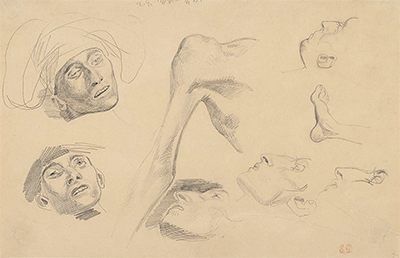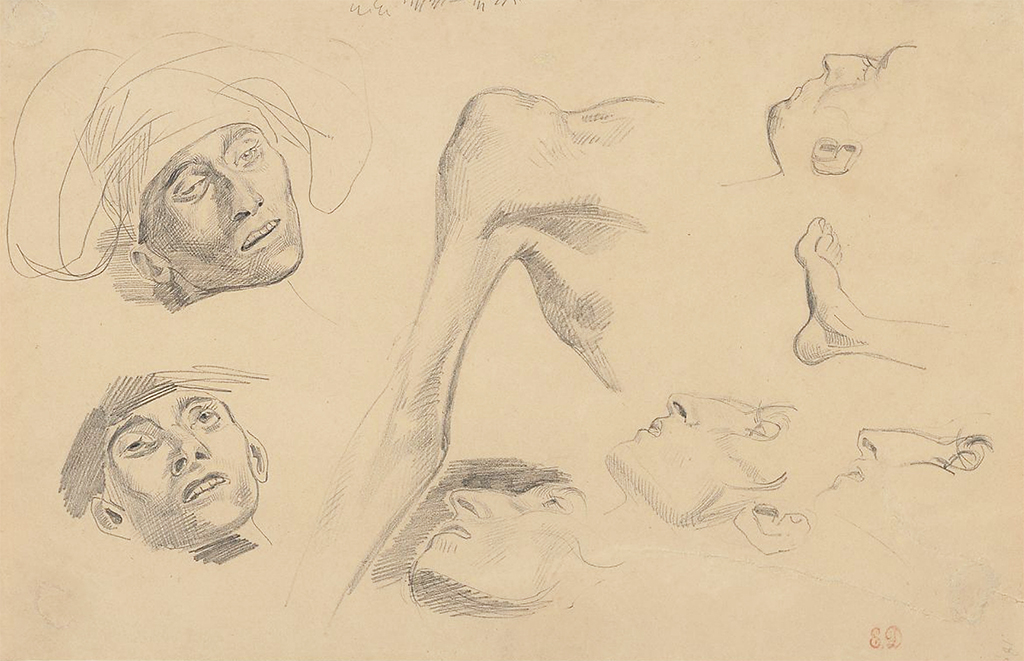This weak, boney man is ideally suited to the themes of tragedy commonly used as inspiration by artist Eugene Delacroix. Here he makes studies of different parts of their body in preparation for an upcoming painting.
As a draughtsman, he would master most of the traditional drawing techniques, from various sources in his early years as a young student. In this example he used crosshatching to provide shadow and contour. Graphite was used in this series of sketches and in a very precise manner, as there are no wide brush strokes found in some of his other drawings. Perhaps he had already fleshed out much of the later painting by this point and was now concentrating on the precise detail of particularl elements within the overall composition. He may not have studied each area of the painting is as detailed a manner as this, perhaps suggesting that this figure would be one of the prominent figures within the final piece. The drawing is dated 1823 and was for Scenes from the Massacre at Chios of the following year.
The overall scene was based on the deaths of thousands of Greek civilians at the hands of Ottoman soldiers in Chios, a small Greek island. Such tragic and barbaric events would not only escalate tensions in the region but also inspire Delacroix to visually record their pain and suffering within his work. He would work on capturing a range of emotions within the different figures, some of which were more akin to shock, having experienced and witnessed such extreme violence towards a seemingly defenceless population. The horrors of war have been found in art from many centuries ago all the way up to today, but sadly it seems little has been learnt and such events continue to occur all around the world even today.
The artist here produces several portraits of the same figure, two as head on, with four more from a side on view. There is also a foot and a more detailed shoulder, the latter of which is perhaps designed to underline the skinny nature of this figure, and with it their own personal desperation. This helps to lead the viewer in pitying and feeling sympathy for the predicament of these people which was clearly the intended purpose of this work. Delacroix was always looking for tragedy within his Romanticist work, and real-life sources would always bring powerful emotions for the viewer, if they are aware of the context involved.





